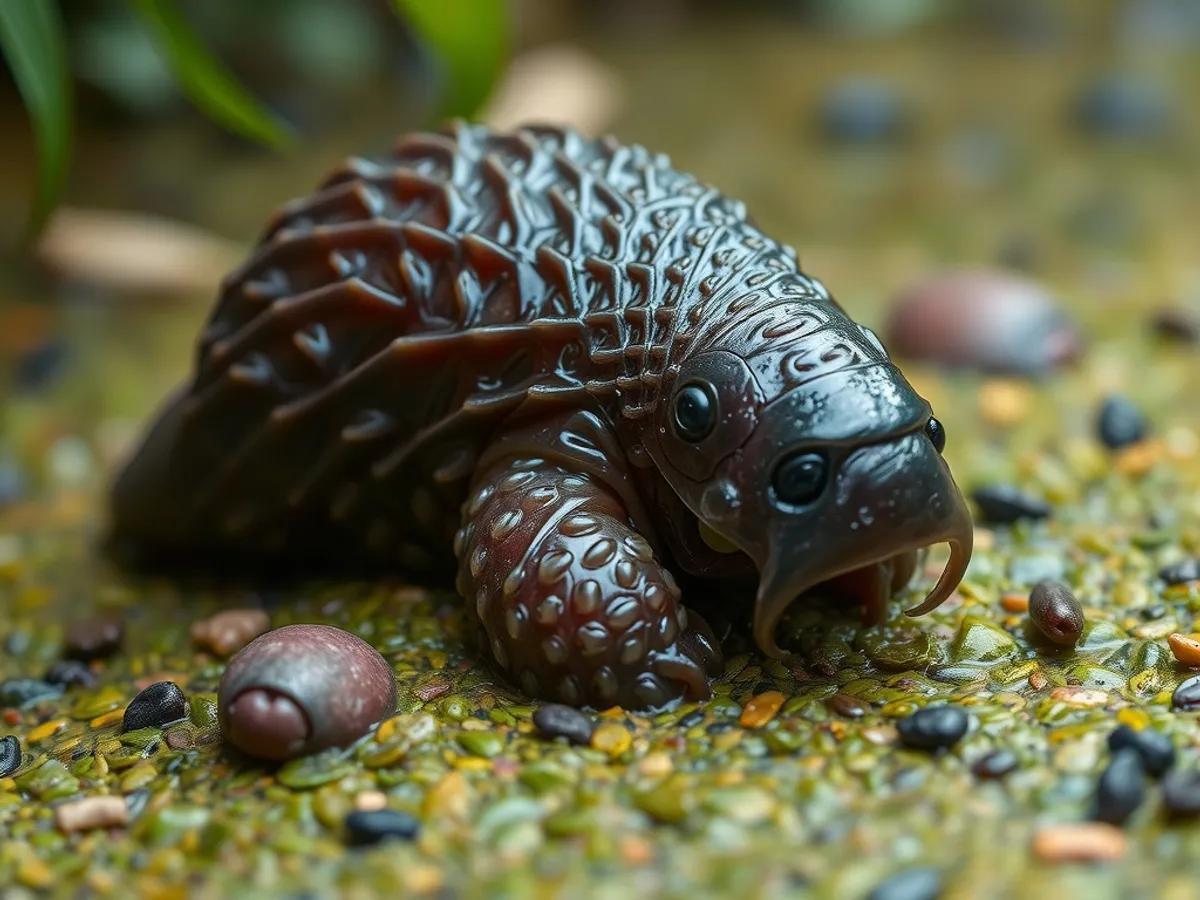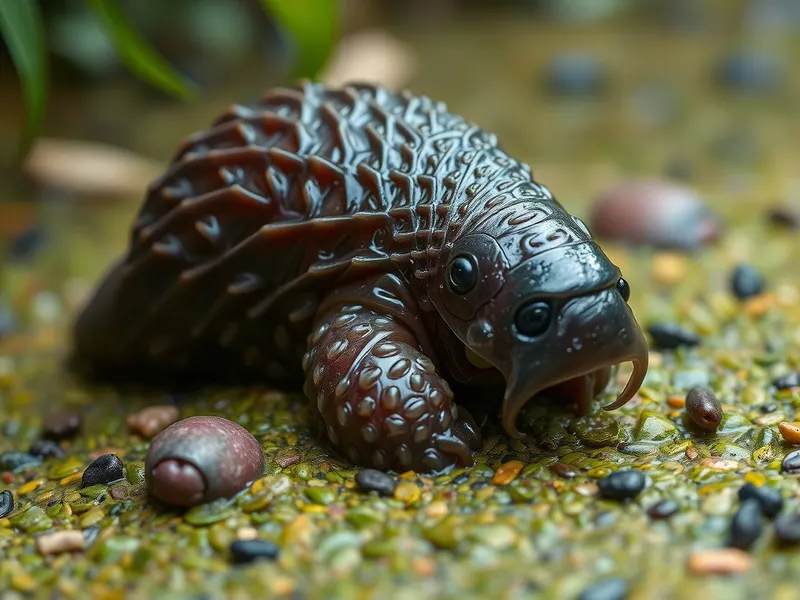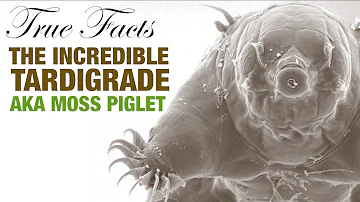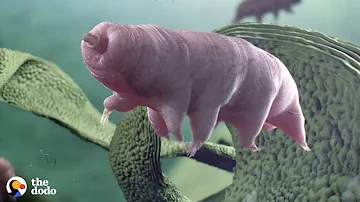
Tardigrade (Water Bear)
Hypsibius dujardini

Meet the Tardigrade (Water Bear)
Tardigrades, often called water bears, are microscopic invertebrates renowned for their extraordinary resilience to extreme environments. Measuring just 0.3 to 0.5 mm in length, these eight-legged creatures can survive extreme temperatures, high radiation, the vacuum of space, and intense pressures. They are found in a variety of moist environments, from moss and lichen to freshwater and marine habitats. Tardigrades enter a cryptobiotic state called tun, allowing them to withstand environmental stress by essentially suspending their metabolism.
Classification
Invertebrate
Habitat
Moist terrestrial environments, freshwater, and marine habitats
Diet
Omnivore
Lifespan
3 months to 2.5 years
Conservation
Least Concern
Weight
0.0001 to 0.001 grams
📖Fascinating Facts
Microscopic Marvels
Tardigrades are so small they can only be seen under a microscope, yet they are found virtually everywhere on Earth.
Space Survivors
Tardigrades survived exposure to the vacuum and radiation of outer space during a 2007 European Space Agency experiment.
Extreme Survivors
In their cryptobiotic 'tun' state, tardigrades can survive temperatures from just above absolute zero to over 150°C (302°F).
📋Detailed Description
Hypsibius dujardini is a species of tardigrade, a phylum of microscopic, water-dwelling invertebrates renowned for their remarkable resilience. Adult H. dujardini typically measure between 0.2 and 0.5 mm in length and possess a plump, segmented body with four pairs of stubby, unjointed legs, each ending in tiny claws adapted for gripping substrate. Their cuticle is flexible and periodically shed during molting. Internally, they have a simple digestive tract, a muscular pharynx for sucking in food, and lack both circulatory and respiratory systems, relying on diffusion for gas exchange. H. dujardini is primarily found in freshwater environments, especially in mosses and lichens, but can also inhabit soil and leaf litter. They are omnivorous, feeding on algae, bacteria, and small protozoa by piercing cell walls with their stylets. Tardigrades are solitary and exhibit minimal social interaction, with most behaviors centered around feeding and reproduction. Their most notable adaptation is cryptobiosis, a reversible ametabolic state where metabolic processes are nearly halted, allowing survival under extreme desiccation, temperature, radiation, and even the vacuum of space. Reproduction is primarily sexual, with females laying eggs that are often deposited in the shed cuticle. H. dujardini is a model organism for developmental and evolutionary studies due to its transparent body and sequenced genome.
💡 Did you know?
Some tardigrade species have survived being frozen for over 30 years and revived when thawed.
🔬Research & Sources
🎭Behavior & Social Structure
Hypsibius dujardini is predominantly solitary, with individuals rarely interacting except during mating. They are slow-moving, using their clawed legs to crawl through water films on moss or soil particles. Feeding occurs by extending their stylets to puncture plant cells or ingest microorganisms, followed by sucking the contents into their pharynx. They exhibit a diurnal activity pattern, being most active when environmental moisture is high. When conditions become unfavorable, such as during desiccation or extreme temperature shifts, H. dujardini enters the tun state, retracting its legs and contracting into a barrel shape to minimize water loss. There is no evidence of territoriality or complex social structure, and communication is limited to chemical cues during mating.
👶Reproduction & Life Cycle
Reproduction in H. dujardini is primarily sexual, though parthenogenesis has been observed in some populations. Mating typically occurs after molting, when the female's cuticle is shed and eggs are laid within it. Fertilization is external, with males depositing sperm onto the eggs as they are released. Females lay between 5 and 12 eggs per clutch, with eggs exhibiting distinctive surface ornamentation. Embryonic development is direct, with juveniles hatching as miniature adults after an incubation period of 4 to 14 days, depending on temperature. There is no parental care post-oviposition, and juveniles are independent from hatching. Breeding can occur year-round in stable laboratory conditions, but in the wild, it is often synchronized with periods of high humidity.
🛡️Adaptations & Survival
H. dujardini possesses several remarkable adaptations for survival in fluctuating environments. The most significant is cryptobiosis, particularly anhydrobiosis, where the tardigrade loses almost all body water and synthesizes protective molecules such as trehalose and unique tardigrade-specific proteins (e.g., Dsup) that stabilize cellular structures and DNA. Their cuticle provides a barrier against desiccation, and their ability to repair DNA damage is highly advanced, contributing to their resistance to radiation and oxidative stress. The claws and muscular pharynx are specialized for feeding on a variety of microscopic prey. Their small size and transparent body aid in evading predators and facilitate gas exchange by diffusion.
📚Research Sources
🎨Cultural Significance
Tardigrades, including H. dujardini, have gained significant attention in popular science and media due to their extraordinary survival abilities, often being dubbed 'indestructible' or 'immortal.' They have become symbols of resilience and adaptability in popular culture, featured in documentaries, educational materials, and even as mascots for scientific outreach. There are no known traditional uses or roles in mythology, but their unique biology has inspired research into biotechnology, particularly in the fields of cryopreservation and radiation protection.
🔬Recent Research & Discoveries
Hypsibius dujardini is a key model organism in tardigrade research due to its ease of laboratory culture, transparent body, and fully sequenced genome. Recent studies have focused on the molecular mechanisms of cryptobiosis, particularly the discovery of the Dsup protein, which protects DNA from radiation-induced damage. Genomic comparisons have revealed horizontal gene transfer events, suggesting evolutionary adaptation to extreme environments. Ongoing research explores their potential in biotechnology, such as improving crop drought resistance and developing new methods for preserving biological samples. Studies in astrobiology have used H. dujardini to investigate the potential for life to survive in space, with experiments demonstrating their survival in low Earth orbit.
🎥Wildlife Videos

Water Bear vs. Giant Tube Worm: Battle for the Toughest | Animal Showdown
About Animal Showdown: It's an animal match-up! Get ready for a series of battles to see who's the best and baddest. Find out ...
Nat Geo Kids

Tardigrades: The Most Resilient Animals in the Universe
----------- SOCIAL MEDIA https://www.instagram.com/animalogicshow/ https://twitter.com/animalogicshow ...
Animalogic

What are Tardigrades? | BBC Earth Explore
Welcome to BBC Earth Explore! We make films about the incredible natural world, we investigate the conundrums, quirks and ...
BBC Earth Explore

True Facts: The Incredible Tardigrade
CREDITS: This video was made in collaboration with Benedikt Pleyer, who is a gifted microscopist and has a wonderful ...
Ze Frank

Tardigrades Are the Toughest Animal on Earth that can Survive Space and Volcanoes | The Dodo
Tardigrades, also known as water bears or moss piglets, are the toughest and probably the weirdest animal species on Earth.
The Dodo

How to find a WATERBEAR (tardigrade)
Here we look at how to find a waterbear, tardigrade or otherwise known as a moss piglet! They are incredible animals! It's very ...
Walt (oneminmicro)
🌍Habitat Information
The Tardigrade (Water Bear) typically inhabits Moist terrestrial environments, freshwater, and marine habitats environments. Tardigrade (Water Bear)s have adapted to their environments with specialized features and behaviors.
Primary Habitat:
Moist terrestrial environments, freshwater, and marine habitats
More detailed habitat information will be available soon.
🛡️Conservation Status
The Tardigrade (Water Bear) is currently classified as Least Concern. Conservation efforts are crucial for preserving this species for future generations.
Common Threats:
- 🏠Habitat loss and fragmentation
- 🌡️Climate change impacts
- 🎯Hunting and poaching
- 🏭Human-wildlife conflict
⚠️Threats & Conservation Challenges
Currently, H. dujardini faces minimal direct threats due to its microscopic size, wide distribution, and resilience to environmental extremes. However, habitat loss from pollution, urbanization, and climate change may impact local populations, particularly in sensitive freshwater ecosystems. Their ability to survive in extreme conditions makes them less vulnerable than many other microfauna, but long-term changes in global moisture patterns could pose challenges. There is no evidence of significant population decline, and the species is not considered threatened.
🔬Scientific Classification
Scientific Name
Hypsibius dujardini
Classification Hierarchy
🔍 About Taxonomic Classification
Taxonomic classification is a hierarchical system used by scientists to classify and organize living organisms based on shared characteristics and evolutionary relationships.
The system moves from broad categories (Kingdom) to increasingly specific ones, with each animal's scientific name typically consisting of its Genus and species.
📝Community Notes
Share your observations and insights about the Tardigrade (Water Bear) with our community of wildlife enthusiasts.
Join Our Community
Sign in to share your observations and connect with fellow wildlife enthusiasts.
Sign In to ContributeNo community notes yet
Be the first to share your observations about the Tardigrade (Water Bear)!
Explore Tardigrade (Water Bear)
Select a tab above to learn more about this amazing animal.
📸Photo Gallery
No photos available for this animal yet.
🌟Discover More Wildlife
Continue your journey of discovery with more fascinating animals from our database
